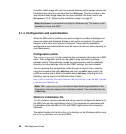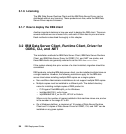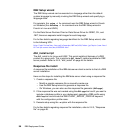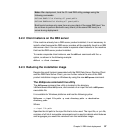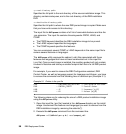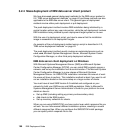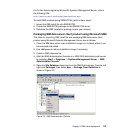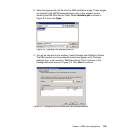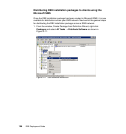100 DB2 Deployment Guide
3.2.4 Mass deployment of IBM data server client product
We have discussed general deployment methods for the DB2 server product in
2.2, “DB2 server deployment methods” on page 42 and these methods are also
applicable to the IBM data server client. The general types of deployment
methods involve either push deployment or pull deployment.
The push deployment method involves DB2 installation being initialized by a
central location without any user intervention, while the pull deployment involves
DB2 installation being initiated by each deployment target system on its own.
With the use of a deployment script, you have to ensure that the installation
image is accessible to all deployment targets.
An example of the pull deployment method using a script is described in 2.2,
“DB2 server deployment methods” on page 42.
The push deployment method usually involves an automated service such as
rshd, sshd, Microsoft System Management Server, Microsoft System Center
Configuration Manager, or other third party deployment software.
IBM data server client deployment on Windows
With Microsoft Systems Management Server (SMS) and Microsoft System
Center Configuration Manager (SCCM), you can install DB2 products across a
network, and set up the installation from a central location. The Microsoft System
Center Configuration Manager is a new release of Microsoft Systems
Management Server. An SMS/SCCM installation minimizes the amount of work
the users will have to perform. This installation method is ideal if you want to roll
out an installation based on the same setup on a large number of clients.
You must have at least SMS Version 2.0 installed and configured on your
network for both your SMS server and SMS workstation. Refer to Microsoft's
Systems Management Server Administrator's Guide for your platform for more
details on how to:
Set up SMS (including setting up primary and secondary sites).
Add clients to the SMS system.
Set up inventory collection for clients.
When you are using SMS/SCCM, you have control over which response file you
will use. You can have several different installation options, resulting in several
different response files. When you configure the SMS/SCCM install package,
you can specify which response file to use.



